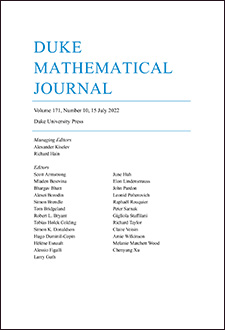Abstract
We prove that the convex peeling of a random point set in dimension approximates motion by the power of Gaussian curvature. We use viscosity solution theory to interpret the limiting partial differential equation (PDE). We use the martingale method to solve the cell problem associated to convex peeling. Our proof follows the program of Armstrong and Cardaliaguet for homogenization of geometric motions, but with completely different ingredients.
Citation
Jeff Calder. Charles K. Smart. "The limit shape of convex hull peeling." Duke Math. J. 169 (11) 2079 - 2124, 15 August 2020. https://doi.org/10.1215/00127094-2020-0013
Information





